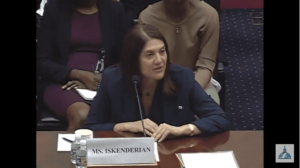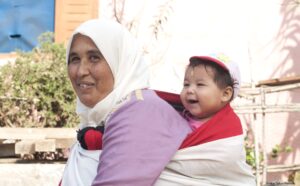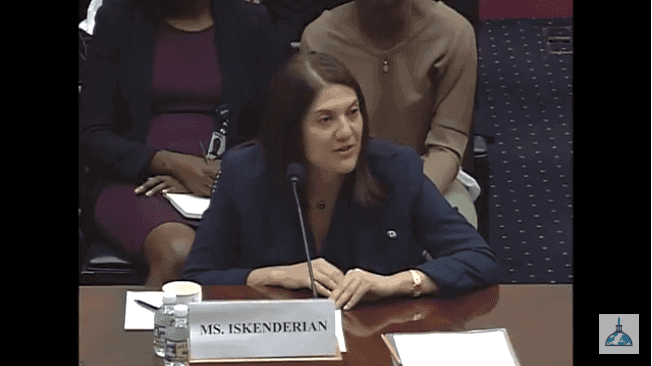[ad_1]
Initially posted on July 17, 2017
A word from Girls’s World Banking:
On July 12, 2017, Mary Ellen testified in entrance of the USA’ Home Committee on International Affairs listening to entitled “Past Microfinance: Empowering Girls within the Creating World.”
We’re reposting her ready testimony as a result of although greater than a yr has handed, it’s simply as related. The market potential of the practically 1 billion unserved girls is more and more threatened by political, financial and bodily insecurity.
Nonetheless we at Girls’s World Banking are working arduous to chip away at this downside in our collaborations with monetary service suppliers and policymakers throughout the rising markets who, not like many within the sector, have “seen the sunshine” and are dedicated to closing the gender hole in monetary inclusion and realizing the advantages of doing so of their bottom-line and driving development extra broadly within the economic system.

However Girls’s World Banking can’t do that alone. The World Findex tells us that 1.1 billion girls – greater than half of the world’s unbanked inhabitants — would not have an account at a financial institution, whereas tons of of hundreds of thousands extra would not have entry to the complete set of economic merchandise. As well as, girls personal roughly one-third of the 200 million companies in rising economies that haven’t any or inadequate entry to credit score. Offering these girls with fundamental monetary providers– that basic first step towards financial empowerment — can unlock unprecedented financial development and job creation and might have a direct influence on improvement outcomes akin to well being, training, meals safety, and water and sanitation.
 Girls spend, save and make investments cash in profoundly alternative ways than males. One such distinction: when girls have discretion over their monetary selections, they prioritize spending on their households. On common, girls spend 90 cents out of each greenback earned on training, well being care, and housing, compared to males’s 60 cents. Bettering a lady’s monetary entry brings with it a “multiplier impact” that will probably be vital to realizing the potential of economic inclusion for lowering poverty and driving economic17 development.
Girls spend, save and make investments cash in profoundly alternative ways than males. One such distinction: when girls have discretion over their monetary selections, they prioritize spending on their households. On common, girls spend 90 cents out of each greenback earned on training, well being care, and housing, compared to males’s 60 cents. Bettering a lady’s monetary entry brings with it a “multiplier impact” that will probably be vital to realizing the potential of economic inclusion for lowering poverty and driving economic17 development.
I’m happy to notice that you’ve entitled this listening to “Past Microfinance.” The standard microfinance establishments established an essential precept: low-income folks – and ladies specifically — can borrow responsibly. However over time we’ve realized that, like all of us, low- revenue folks have difficult monetary lives that require greater than only a “one dimension suits all” microloan. Happily, a broad vary of suppliers, together with mainstream industrial banks and insurance coverage corporations in addition to funds suppliers, cell community operators and fintech corporations has emerged to satisfy these wants.
But low-income girls face various obstacles that hinder their entry to those providers; I’ll contact briefly on simply three of them together with some potential options. First, hundreds of thousands of ladies lack the documentation and different types of identification to open even a easy financial savings account. India has lately applied an modern biometric ID system that has dramatically expanded entry to monetary providers. Elsewhere, tiered “Know Your Buyer” necessities enable girls to open “no frills” financial savings accounts with minimal documentation.
The second barrier girls face is a scarcity of collateral. Girls usually have fewer belongings to pledge to a financial institution and in lots of nations are legally barred from proudly owning or inheriting land. In response, some nations have established moveable collateral registries that higher mirror the varieties of belongings girls can present to fulfill financial institution necessities.
Lastly, greater than 1.7 billion girls in low and middle-income nations don’t even personal a cellphone. This lack of entry to expertise mixed with decrease monetary and digital literacy prevents them from totally using digital monetary providers. As soon as girls achieve entry to their very own telephones and a few fundamental coaching, nonetheless, their utilization ranges parallel males’s.
Regardless of these obstacles, I’m optimistic concerning the alternatives offered by girls’s monetary inclusion. The USA can play an essential position in accelerating these alternatives by becoming a member of different developed nations which are investing in girls’s monetary inclusion, usually led by their nation’s Gender Ambassadors. The USA can use its affect on the G20 and different fora to push for implementation of extra nationwide monetary inclusion methods which have express gender targets. USAID, OPIC and even ExIm may catalyze extra non-public sector funding by together with necessities of their applications to serve girls. They may additionally have interaction in public-private partnerships that serve to “de-risk” non-public sector funding.
Distinguished committee members, thanks for calling consideration to the position that ladies’s monetary inclusion performs in constructing stronger households, communities and economies.
[ad_2]

